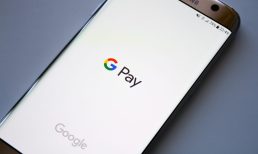Max Neukirchen, CEO of merchant services at J.P. Morgan Chase, told Karen Webster that there’s some catch-up to play here in the States, involving a shift in merchants’ mindsets toward how they mesh the physical shopping experience with purely digital ones.
“There’s a real push toward the emerging super apps in the United States and in North America,” said Neukirchen. “Ultimately, it will come down to a question of customer experience – who will be able to bring together the different parts of the connected digital commerce and economy in a way that makes it seamless for consumers to meet all their needs.”
The omnichannel experience (which underpins a super app), he said, should be focused on the journey – not the channel. That philosophy stands in stark contrast with the fact that consumers find the physical store to be the least satisfying channel, and that merchants are still investing in buy online, pick up in-store offerings (intended to drive foot traffic), with wholly different consumer experiences in each.
There’s been a ripple effect that has shocked the merchant services ecosystems and helped online marketplaces emerge into what Neunkirchen described as “a central phenomenon to the connected world, where buyers and sellers and consumers come together.”
Along the way, the digital strategies – indeed, the mindset underlying those strategies – have been shifting. The challenge is out there for everyone, he said, and the small businesses face the same issues of merging the physical and digital into a good experience as the largest firms. The good news is that a broad range of solution and service providers (J.P. Morgan among them) can help client companies build compelling digital offerings that span fulfillment, fraud management, inventory management and onboarding functions.
Advertisement: Scroll to Continue
Neukirchen pointed to J.P. Morgan’s own offerings that help markets and merchants collect money, and also help suppliers and providers get paid under one roof, where they also can tap credit lines or get help with KYC and onboarding validation.
That holistic, one-stop-shop, he said, positions J.P. Morgan well against FinTech and even Big Tech competitors who have been jockeying to help craft omnichannel experiences – and the bank has the added competitive factor of trust (and a longstanding history with many of its corporate clients) that is hard to replicate.
The Key Questions
“The important question that many merchants are grappling with is how to design the digital engagement with their customers,” Neukirchen noted. “Because it is very important from a loyalty standpoint, but also … because payments actually plays a critical role in all of this.”
As he told Webster, payments shape significant parts of the experience that customers have at the most critical time of engagement – during checkout in the digital world. The payments part of the equation has now become a topic of discussion and consideration not just for the treasurer, the finance department or the CFO, but also for product development, marketing, the tech team and even the CEO.
As merchants are re-examining their digital journeys, there is the potential to bring a more eCommerce-like experience to brick-and-mortar retail, so that physical stores function less as a simple destination for foot traffic and more like a center for innovation.
As Neukirchen noted, the omnichannel experience merchants provide to their customers becomes critical as an increasing number of consumers order something online, and then want to exchange those items at the store – or they browse something in-store, but opt to order it at home, online.
“So the question of how to make the various channels – digital and in-store – work together from a purchase standpoint, and also from a servicing and ongoing experience standpoint, is a big priority for many of our merchants,” he explained.
It’s been a mixed bag so far, he pointed out, where the typical experience of a customer showing up in a store, pulling up an app on their phone, generating or accepting a code, and then paying at the point of sale has been challenged in many ways. Simply put, nowadays, customers expect the same simplicity in-store that they have online – and as a result, they’re eager to pay with biometrics or leverage other high-tech offerings to make commerce a bit more seamless.
As the lines for consumers blur and ultimately become invisible, Neukirchen said, merchants must decide who owns the consumer experience, and then figure out what must be done to make the journey seamless. But as the lines of commerce blur, so do the lines between stakeholders in the ecosystem. Neukirchen said that firms have traditionally organized themselves along various points in the channel – the firm, for example, that owns the stores, or the app, or the product.
“Consumers don’t think that way,” he explained. “They want integrated experiences, and they want companies to basically stitch those solutions together in a seamless way.” That approach, over time, “will differentiate the winners from the losers in a given segment.” The winners, he predicted, could be the companies that own the last mile of the customer journey.
To that end, it’s not just about connections, but about smart connections – and data are the critical differentiators. Data, said Neukirchen, can help firms anticipate the needs of customers along a continuum of services – setting the stage for the customer to prefer that solution above all others.
It’ll be interesting to see how companies compete for customers’ attention as the connected economy grows, maintained Neukirchen.
“It’s no longer the case that you onboard a consumer on your solution or your app once, and then you’re done,” he said of the merchants and providers. “Consumers will be connected in many ways, and we’ll have choices. And then it will be a constant competition for who provides the easiest, smartest and most trusted connections.”



